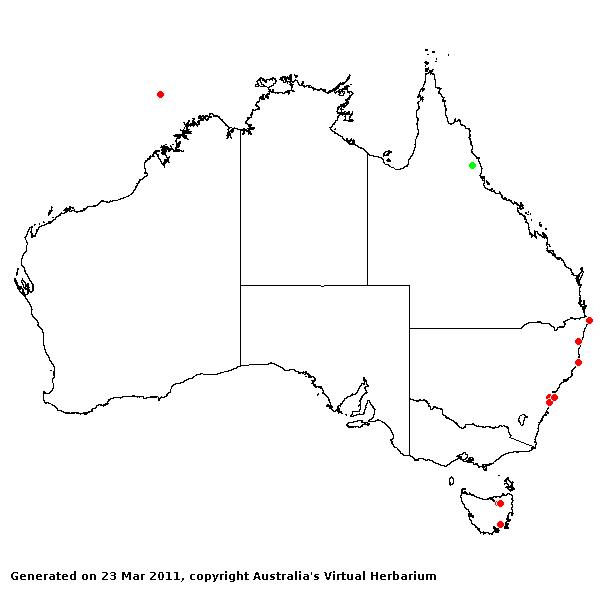Zea* Sp.Pl. 974 (1753).
Derivation:. From the Greek zea or zeia, name of an undetermined cereal.
Key references (keys and floras):. C.A.Gardner, Flora of Western Australia 1 Gramineae 353–354 (1952); E.E.Henty, Manual Grasses New Guinea 191 (1969); M.Lazarides, Tropical Grasses S.E. Asia 99–100 (1980) and 96 as Euchlaena; B.K.Simon, Key to Australian Grasses 177 (1993); S.W.L.Jacobs and C.A.Wall, Flora of New South Wales 4: 427 (1993); D.Sharp and B.K.Simon, AusGrass (2002); S.W.L.Jacobs, R.D.B.Whalley & D.J.B.Wheeler, Grasses of New South Wales, 4th ed, 401 (2008).
W.D.Clayton & S.A.Renvoize, Genera Graminum (1986), genus (646).
Naturalised. 5 species, from tropical America, unknown in the wild: cultivated in all warm to tropical regions of both hemispheres. 2 species in Australia, WA, NT, Qld, and NSW. Also New Guinea, Malesia, and New Zealand.
Habit. Robust annual, single-stemmed. Leaf blades broad. Ligule a fringed membrane. Plants monoecious with all fertile spikelets unisexual, male and female-fertile spikelets in different inflorescences.
Inflorescence. Inflorescence very unusual (the female axillary, comprising a stout, spicate spadix with spikelets in few to several longitudinal rows, terminating in a tuft of long pendulous styles (silks); the male spikelets in terminal panicles of spiciform tassels), of two types, spatheate. Spikelet-bearing axes with heteromorphic spikelets.
Spikelets. Spikelets subterete to dorsally compressed, 2 flowered, with 1 fertile floret, paired; sessile spikelet with lower incomplete floret. Fertile spikelets not disarticulating.
Glumes. Glumes more or less equal, long relative to adjacent lemmas, awnless, similar (basally fleshy, hyaline above). Lower glume relatively smooth, 0 nerved. Upper glume 0 nerved.
Florets. Lower incomplete floret(s) sterile. Lemmas awnless, 0 nerved, more or less equalling fertile lemmas to exceeding fertile lemmas, similar in texture to fertile lemmas (hyaline), not becoming indurated. Fertile florets 1. Lemmas less firm than glumes, not becoming indurated, muticous, 3 nerved, glabrous. Palea relatively long, apically notched, with apical setae. Stamens 0. Grain medium sized, compressed dorsiventrally or terete. Hilum short. Embryo large. Pedicelled spikelets with glumes (two), without proximal incomplete florets, 2 floreted.
Kranz Anatomy. C4, biochemical type NADP-ME.
2n = 20, 2 ploid.
Habitat. Mesophytic.
Classification. Panicoideae; Andropogoneae.
Notes. Corn (Z.mays) is so differently morphologically from the other 4 species, that the latter are commonly placed in a separate genus. However the differences, though extreme to the eye, are found to be under relatively simple genetic control, and are such as would be expected between species subject to disruptive selection. Thus selection pressure on the wild species has been towards efficient dispersal, but on corn it has been in the opposite direction (Clayton and Renvoize, 1986).
Types Species. Z. mays L.
Biogeographic Element. Clifford & Simon 1981, Simon & Jacobs 1990: Naturalised.


